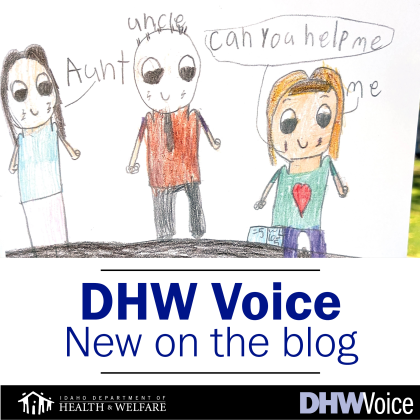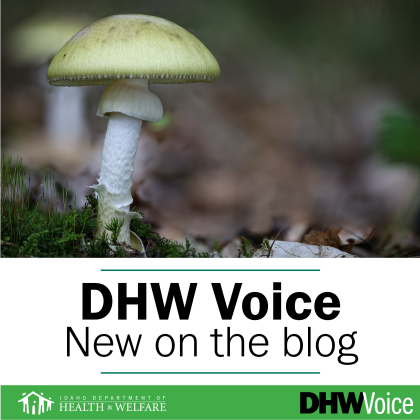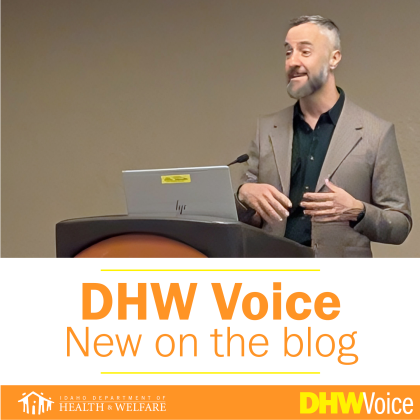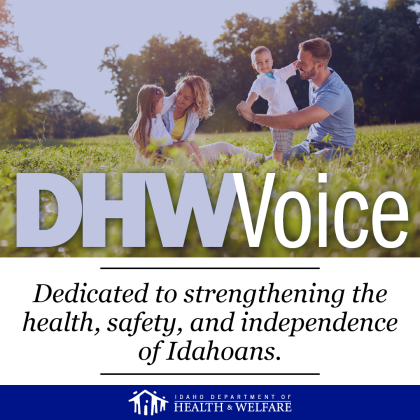Idaho foster mom takes in boy with challenging behaviors
As a Resource Peer Mentor (RPM) in Idaho, Kimberly lends support to foster parents, and she does this because she needed support herself. She and her husband currently have six children in the home: two teen boys (biological), two foster children, one adopted young daughter, and one adopted boy who is now in junior high school.
All of Kimberly’s kids have come with challenges, but one in particular tested her compassion and patience.
“Every case is hard,” she said. “Every case. There's not a perfect easy case. There’s not a perfect easy child.”
The adopted boy was only supposed to stay in foster care for a night four years ago. It took urgent finessing from case workers and managers to get the boy, then only 7, a home for the night.
(Follow this link to watch a video about Kimberly’s experience.)
The reason for the challenge was because the boy exhibited severe and violent behaviors. With other children in her home, Kimberly was afraid. After considerable deliberation, she and her husband agreed to help for 24 hours.
As an RPM, Kimberly has helped train and support lots of foster families (her current case load is 23), so she was uniquely equipped to handle the incoming challenge.
The plan was, “we would get him that evening, and then we would keep him until sometime mid-morning that morning. We were just buying them a little time” to find him a placement at an in-patient facility.
Kimberly made an escape plan for the other children and watched the baby monitor trained on the boy all night. She barely slept. The case workers were on call in case his behaviors reached a level that was “scary and overwhelming” to the point the police would need to be involved. The plan was for the police to take him away if he acted out.
“We're talking about a 7-year-old being scary enough to need a police officer to remove him from our home,” Kimberly said. “You're scared of every breath you take. You're scared of everything he says.”
“But he was pretty soft, quiet, excited to play with the toys,” she said. “[Foster] kids hold back for a little bit. That honeymoon phase is real. It’s very, very real.”
The only other option for this youth would be inpatient treatment or a psychiatric hold, but for those to be legitimate options he’d need to act out violently first. It put Kimberly on edge, waiting for an inevitable outburst. But it didn’t happen.
So they were in an uncomfortable limbo in which the boy was supposed to be removed from her home after exhibiting Big Behavior, but the day passed without incident.
So, he stayed another night, and then he stayed for a week. DHW child welfare staff kept close watch, with twice-weekly meetings and full wraparound support—with the boy’s removal to residential support being the likely end result.
But the longer the boy stayed, the better he did. The family handled the blowouts, disruptions, and behavioral uncertainty. He started third grade along with one-on-one daily tutoring. He also went to therapeutic counseling.
Kimberly spent months advocating for the boy—fighting to get him back in school and into routines while facing daily battles over simple tasks like brushing his teeth. Threats, defiance, and chaos were common, but with support from the Department of Health and Welfare and his counselor, she found tools to persist. Though she could have sought police intervention many times, she refused to give up, knowing he needed a home, not a hospital.
He had grown used to instability and expected to be moved when things got hard, but Kimberly’s steady parenting showed him otherwise. She insisted he be held to the same expectations as any child, while recognizing the pain that shaped his behavior. As DHW looked for a long-term placement, she realized how much she had invested in him—so much that the thought of letting go left her panicked.
“They were never going to measure up and be good enough to raise my child that I loved and I'd worked so hard to protect,” she said.
Kimberly and her husband made the decision to adopt the boy themselves.
“It was by far the hardest thing I've ever done,” she said. “He is still by far the hardest kid I've ever had. He still is the hardest kid we currently have. Some of that stuff's embedded in him for the rest of his life. I talk about it constantly, what being starved looks like on an adult's brain. That's inside of him forever.”
The boy is still behind his peers academically and emotionally, but he is growing fast. He still has some Big Behaviors, but he isn’t going anywhere. He helps with the other foster kids in the house. He’s part of the family.
Why Should I Foster?
Kimberly’s story is sobering, but it’s also inspiring. She said she and her family are better off for their experience fostering. They’ve been softened by love, expanded by compassion, and steadied by the challenges they’ve faced.
“I’m a better human. I’m a better wife. I’m a better mom,” she said. “My husband and I are better partners.”
One of the biggest messages for those considering fostering is that she would walk her path all over again if given the chance.
“I hope people open their eyes to it and get involved in any way they can,” she said. “Foster kids need help. Kids may come dirty. Kids may come starving. They may come with nothing, or they may come with lots of stuff. There are so many kids that need homes.”
Idaho needs foster parents
If you’ve ever considered fostering, know that your willingness to offer a home—even for one child for one season—can change a child’s life forever. For more information, call 211 or visit the Department of Health and Welfare’s foster care page. You could be the difference that turns a story of struggle into one of hope and belonging.
The Idaho Department of Health and Welfare is dedicated to strengthening the health, safety, and independence of Idahoans. Learn more at healthandwelfare.idaho.gov.








Join the Discussion
Please note the following terms of participation in commenting on the DHW Voice blog.
To ensure a productive discussion you agree to post only comments directly related to this post and to refrain from posting obscenities; threatening, abusive or discriminatory language; sexually explicit material; and other material that would violate the law if published here; promotional content; or private information such as phone numbers or addresses. DHW reserves the right to screen and remove inappropriate comments.